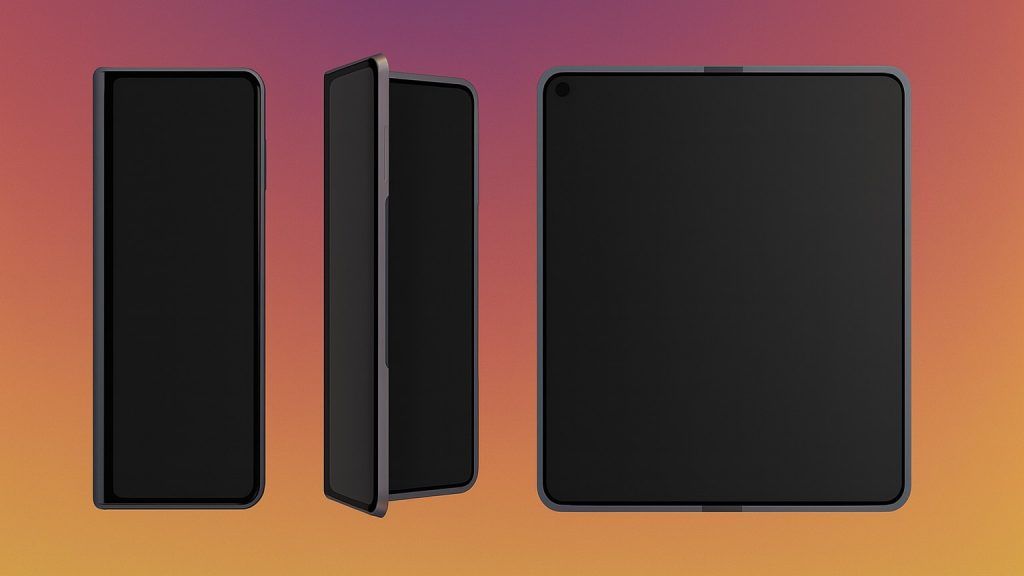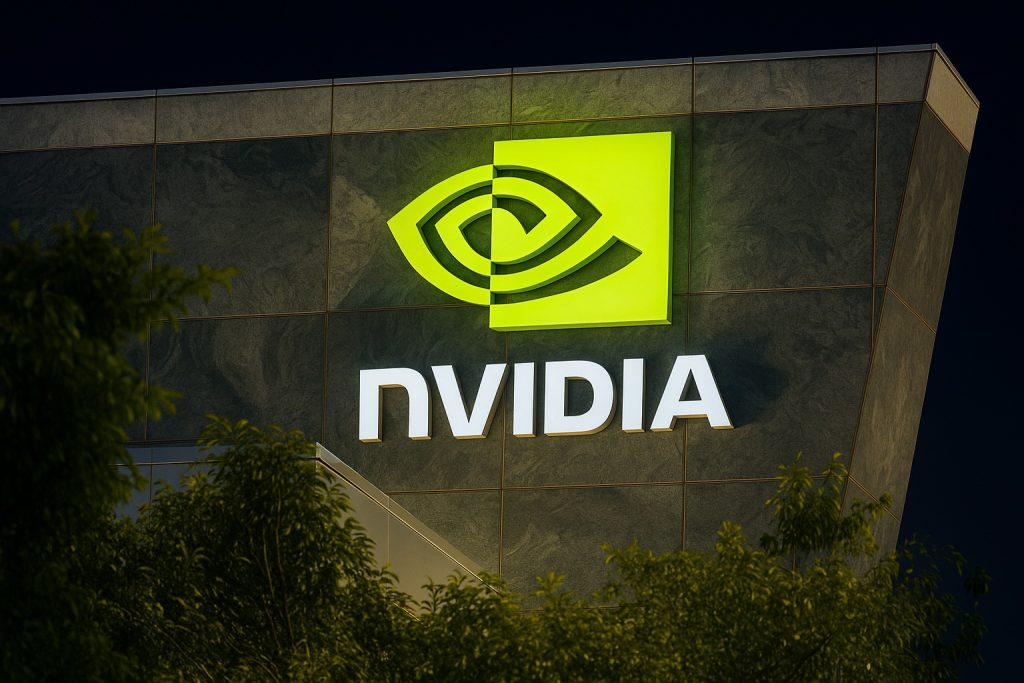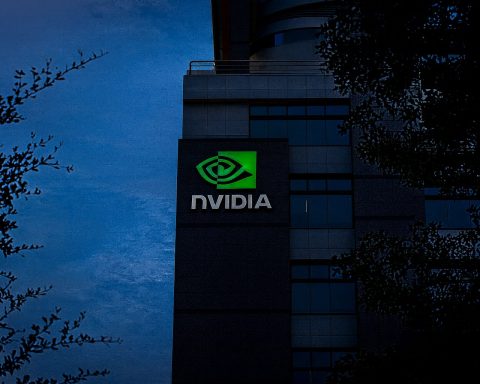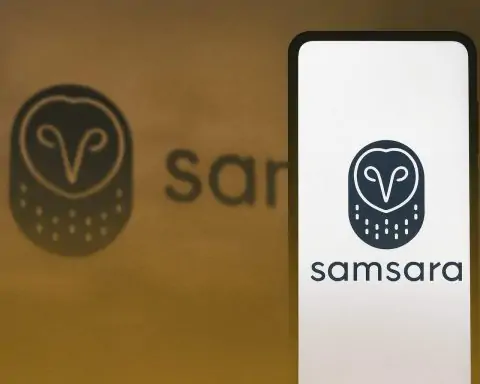- Half-Price Flagships: Amazon’s Great Indian Festival 2025 sale is offering 50%+ discounts on premium phones under ₹40,000, like the Samsung Galaxy S24 FE now at ₹29,999 (down from ₹59,999) [1]. These festive deals bring high-end specs into mid-range budgets.
- Top-Specs on a Budget: Phones such as the OnePlus 13R (Snapdragon 8 Gen 3, 6,000 mAh battery) and Google Pixel 9a (Tensor G4 chip, 48 MP dual camera) are available around ₹35–39K, delivering flagship-level performance and cameras at a fraction of their launch prices [2] [3].
- New Camera Tech Teased: Meanwhile, Vivo’s upcoming X300 series is pushing mobile photography further – it will support a Zeiss 2.35× telephoto lens attachment for an unprecedented ~8.7× optical zoom (≈200 mm focal length) on a phone [4]. This attachable “teleconverter” kit lets users capture far-away subjects with clarity, signaling the next leap in smartphone camera innovation [5].
- Experts See Festive Surge: Industry analysts note that brands are aggressively slashing prices on older models and rolling out bank offers during the festive season, anticipating a 4% jump in smartphone unit sales and 7% in revenue this year [6] [7]. Premium models are expected to drive this growth as consumers seize the best deals and upgrades.
- Why It Matters: Consumers now can grab last year’s top-tier phones at mid-range prices, getting features like high-refresh AMOLED displays, big batteries, and advanced cameras without breaking the bank. At the same time, phone makers are debuting cutting-edge features (like Vivo’s zoom lens kit) to entice buyers with something new. It’s a win-win for tech enthusiasts – great bargains today, and exciting innovations on the horizon.
Amazon Great Indian Festival: Best Phones Under ₹40,000
Festive sales in India (like Amazon’s Great Indian Festival and Flipkart’s Big Billion Days) have become the prime time to score high-end smartphones at bargain prices. This year is especially competitive, with brands offering heavy discounts on older models and financing deals on new launches [8]. If you’re looking to upgrade without splurging beyond ₹40,000, here are five standout deals you shouldn’t miss:
- Samsung Galaxy S24 FE 5G – Flagship Experience at ₹29,999: Samsung’s “Fan Edition” of the Galaxy S24 launched at ₹59,999 last year, but is now available for just ₹29,999 during the sale [9]. That’s roughly half its original price. The Galaxy S24 FE boasts a 6.7-inch 120 Hz AMOLED display and an Exynos 2400e chipset – specs once reserved for premium flagships [10]. It also packs a versatile triple camera (50 MP main, 12 MP ultrawide, 8 MP telephoto) and a 4,700 mAh battery, making it an incredible value for its sale price. (With additional bank/exchange offers, some buyers are effectively getting this flagship-grade phone for under ₹30K!)
- Vivo V50 5G – Big Battery and Bright Display: The Vivo V50 5G, originally priced at ₹34,999, sees a modest drop to ₹31,256 (₹3,743 off) on Amazon [11]. What makes the V50 notable is its 6.77-inch AMOLED screen with a 120 Hz refresh rate and an eye-searing 4,500-nit peak brightness [12] – ideal for multimedia and outdoor visibility. It runs on Qualcomm’s new Snapdragon 7 Gen 3 chip, paired with up to 12 GB RAM, ensuring smooth performance. Plus, Vivo crammed in a huge 6,000 mAh battery with 90 W fast charging, so you won’t be hunting for a charger mid-day [13]. Overall, the V50 offers a balance of a large, vibrant display and longevity, now at a more palatable price.
- OnePlus 13R – Powerhouse with Flagship Chip: OnePlus’s 13R (the toned-down variant of its flagship) is now ₹37,999 in the Great Indian Festival [14]. The key attraction here is the performance hardware – a Snapdragon 8 Gen 3 processor coupled with up to 16 GB of fast LPDDR5X RAM [15]. This means the 13R can chew through games and multitasking like a true flagship. It features a fluid 6.78-inch AMOLED display at a sharp 1.5K resolution with LTPO tech (adaptive 120 Hz refresh) for buttery-smooth visuals [16]. OnePlus also equipped it with a hefty 6,000 mAh battery and 80 W SuperVOOC charging, so refueling is quick [17]. The camera setup includes a 50 MP main sensor, 8 MP ultrawide, and even a second 50 MP telephoto lens for portraits [18] – an impressive array in this price bracket. For under ₹40K, the OnePlus 13R delivers almost everything a premium flagship does, making it a top pick for power-users on a budget.
- Google Pixel 9a – Pure Android and Stellar Camera: Google’s Pixel 9a has hit its lowest price ever at ₹39,299 during this sale [19]. Launched in April 2025, the Pixel 9a brings Google’s famed camera software and clean Android experience into the mid-range segment. It runs on Google’s in-house Tensor G4 chip with 8 GB RAM, ensuring smooth performance and exclusive Pixel AI features. The phone sports a handy 6.3-inch OLED display (120 Hz) that’s bright (up to 2,700 nits) and color-rich [20]. Photography is the Pixel 9a’s trump card – its dual rear cameras (48 MP main with OIS + 13 MP ultrawide) deliver punchy, true-to-life photos, especially in low light [21]. A 13 MP front camera handles selfies and video calls. With a 5,100 mAh battery, 23 W fast charging, and even 7.5 W wireless charging support, the Pixel 9a is a well-rounded package [22]. For anyone who values camera quality and timely software updates (Pixel phones get the latest Android updates first), this discounted price is a steal.
- Xiaomi 14 Civi 5G – Style and Substance for ₹24,999: Xiaomi’s 14 Civi 5G sees one of the steepest price drops, down to ₹24,999 from its ₹42,999 launch price [23]. That aggressive cut makes it the most affordable on this list, yet it doesn’t skimp on features. The Xiaomi 14 Civi flaunts a 6.55-inch LTPO AMOLED display with Dolby Vision, HDR10+ support, and a silky 120 Hz refresh rate [24]. It even reaches 3,000 nits peak brightness, ensuring great visibility in sunlight [25]. Under the hood, it’s powered by the Snapdragon 8s Gen 3 chipset – a capable 8-series processor – combined with a 4,700 mAh battery that supports 67 W fast charging [26]. In design, the Civi line is known for being slim and stylish, often targeting young buyers who want both performance and aesthetics. With this discount, the 14 Civi 5G offers tremendous value, basically delivering upper-midrange specs at a budget-phone price.
Why are these deals so remarkable? In the ₹30-40K range, you’re getting devices that were recently near-flagship level. Many of them launched at much higher prices just a few months ago, but festive sales have made them far more accessible. This under-₹40K segment has become hotly contested, often featuring “flagship killer” phones that pack high-end processors, high-refresh displays, and advanced cameras. The current sale is amplifying that trend – buyers can snag phones with flagship DNA at half the flagship price.
Analysts observe that online platforms like Amazon and Flipkart are driving the first wave of festival sales with such heavy promotions on smartphones [27]. “We expect 4% volume and 7% value growth for smartphones this festive season. Premium phone sales will drive growth,” said Tarun Pathak, associate director at Counterpoint Research [28]. In other words, many consumers are using the holiday discounts to jump to better, higher-priced models than they normally would. Brands too are happy to clear inventory of last year’s models by offering irresistible deals, while also teasing new products to keep buzz high.
Pushing the Boundaries: Vivo X300 Series and the 2.35× Zoom Revolution
While bargain hunters enjoy discounted phones, smartphone makers are already gearing up with next-generation innovations. A prime example is Vivo’s upcoming X300 series, which is making headlines for its groundbreaking camera accessory. Vivo has confirmed that the X300 and X300 Pro will support a Zeiss 2.35× telephoto “teleconverter” lens kit – an attachable lens that dramatically extends the phone’s zoom capabilities [29]. This is the same concept first introduced with the Vivo X200 Ultra’s photography kit, and Vivo is now refining it for the new X300 lineup.
What does a 2.35× teleconverter do? In essence, it acts like a zoom lens extension on a DSLR camera. The X300 Pro is rumored to carry a 200 MP periscope telephoto camera (around 3.7× optical zoom by default). When you mount the Zeiss 2.35× teleconverter on it, it multiplies that zoom by 2.35 times – achieving roughly 8.7× optical zoom, equivalent to a 200 mm focal length in traditional camera terms [30]. In practical use, that means you can capture far-away subjects with unprecedented clarity for a smartphone. Vivo’s product manager even shared sample shots at 200 mm, 400 mm, and 800 mm range, demonstrating how the teleconverter lets the X300 Pro photograph distant scenes (e.g. wildlife, concerts) that would normally be impossible on a phone [31].
Such extreme zoom on a phone “sounds (and looks) absurd, but it’s arguably a natural move for Vivo,” according to tech editor Dominic Preston, noting Vivo’s partnership with Zeiss and reputation for pushing phone camera tech [32]. Indeed, Vivo has built its brand around camera innovation, and this move cements that image. The teleconverter accessory itself comes in a sleek silver finish to match the phone and serves as both a functional tool and a style statement [33]. Unlike typical external lenses, it’s designed in collaboration with Zeiss specifically for the X-series phones, ensuring high optical quality.
Versatility and stability: Impressively, Vivo isn’t limiting the lens kit to the top model – even the standard X300 will be compatible with the teleconverter [34]. The attachment will support various shooting modes beyond just long-zoom shots, including landscapes, candid street photography, portraits, and professional manual modes [35]. Vivo also put serious thought into stability: at such high zoom, even tiny hand shakes get magnified. The X300 Pro is said to achieve a CIPA 5.5-stop stabilization rating (and 4.5 on the regular X300), which is industry-leading for mobiles [36]. In layman’s terms, the phones’ optical image stabilization is fine-tuned to counteract blurring even with the teleconverter attached – a critical factor for getting usable shots at 200 mm zoom. This is in contrast to some conventional periscope zoom cameras, which can struggle or lose some stability when pushing high magnification [37].
Evolution of zoom tech: Vivo’s telephoto journey has been a rapid one. The X100 Ultra (2024) introduced a 200 MP super-telephoto lens as a concept, the X200 Pro (early 2025) improved on it and first offered the clip-on Zeiss teleconverter as part of a kit, and now the X300 series is bringing this concept to maturity – with across-the-board support and better stabilization and imaging software [38]. The goal is to cater to photography enthusiasts who want to use their phone like a semi-pro camera for things like sports, wildlife, and stage events [39].
Vivo’s approach is notable because it’s bridging the gap between smartphone cameras and traditional camera gear. We’ve seen external lens ideas before – earlier this year Xiaomi and Realme showcased concept phones with attachable lenses at MWC 2025 [40], and in the past third-party makers like Moment produced clip-on lenses for phones. Even the new budget Nothing Phone 2 Pro’s accessory line includes simple snap-on lenses. However, nothing has operated at quite the scale or optical sophistication of Vivo’s solution [41]. Vivo is essentially commercializing a pro-level zoom lens for phones, co-engineered by Zeiss, and making it relatively easy to use. Unlike a clunky DSLR lens mount, Vivo’s teleconverter is compact and reportedly quick to attach/detach, coming as part of an official “Photography Kit.” It’s a niche feature, yes – walking around with a phone that has a bolt-on lens will earn you some funny looks – but it demonstrates how far phone photography has come.
According to reports, Vivo will officially launch the X300 and X300 Pro in China on October 13, 2025 [42], where we’ll learn the full specs and pricing. If the X200’s pricing was any indication, the X300 Pro with the lens kit won’t be cheap (the Vivo X200 Ultra’s lens bundle cost around $400 [43] just for the kit). Still, this development is exciting for mobile photography geeks – we’re talking about a smartphone potentially reaching 800 mm zoom with digital assistance (which approaches the realm of professional cameras) all in your pocket. It also raises the bar for other manufacturers: for instance, Samsung’s latest Galaxy S24/S25 Ultra gives a 10× optical periscope zoom (~240 mm equivalent) and up to 100× hybrid zoom, and Apple’s iPhone 15/16 Pro Max tops out at 5× optical (~120 mm). Vivo’s solution, with true optical extension, could outclass those in pure clarity at long range. It will be interesting to see if others follow suit – rumors suggest Oppo is also exploring periscope attachments, and we might see more “phone camera boosters” in coming generations.
The Bottom Line
For consumers in late 2025, it’s a best-of-both-worlds scenario. On one hand, festive sales are making premium smartphones more affordable than ever, as evidenced by the top deals under ₹40K above. You can get a phone today with flagship-grade performance, display, and cameras at a mid-range price – something nearly unthinkable a few years ago. On the other hand, if you’re an early adopter or photography enthusiast, the upcoming wave of devices like Vivo’s X300 Pro promise cutting-edge features that blur the line between phones and professional cameras.
As one industry expert put it, brands are combining broad product line-ups with aggressive pricing and retail execution to seize this festive season opportunity [44]. Many shoppers are upgrading to higher-tier models thanks to the discounts, while others are holding out for the newest tech. In short, it’s an exciting time in the smartphone world: never before have high-end phones been this attainable, and never before have they been this ambitious. Whether you jump on a deal now or wait for the next flagship, there’s plenty to look forward to.
Sources: Recent news from Hindustan Times Tech and GSMArena/FoneArena provided deal details and device specs [45] [46], while expert insights and industry trends come from Moneycontrol’s analysis of India’s festive smartphone market [47] [48]. For the Vivo X300’s camera innovation, official information and commentary were drawn from FoneArena and The Verge [49] [50], highlighting how this telephoto lens kit could change mobile photography. Together, these sources paint a comprehensive picture of the current smartphone landscape – one of deep discounts and dizzying innovations. Enjoy the sales, and keep an eye on what’s coming next!
References
1. www.hindustantimes.com, 2. www.hindustantimes.com, 3. www.hindustantimes.com, 4. www.theverge.com, 5. www.fonearena.com, 6. www.moneycontrol.com, 7. www.moneycontrol.com, 8. www.moneycontrol.com, 9. www.hindustantimes.com, 10. www.hindustantimes.com, 11. www.hindustantimes.com, 12. www.hindustantimes.com, 13. www.hindustantimes.com, 14. www.hindustantimes.com, 15. www.hindustantimes.com, 16. www.hindustantimes.com, 17. www.hindustantimes.com, 18. www.hindustantimes.com, 19. www.hindustantimes.com, 20. www.hindustantimes.com, 21. www.hindustantimes.com, 22. www.hindustantimes.com, 23. www.hindustantimes.com, 24. www.hindustantimes.com, 25. www.hindustantimes.com, 26. www.hindustantimes.com, 27. www.moneycontrol.com, 28. www.moneycontrol.com, 29. www.fonearena.com, 30. www.theverge.com, 31. www.fonearena.com, 32. www.theverge.com, 33. www.fonearena.com, 34. www.fonearena.com, 35. www.fonearena.com, 36. www.fonearena.com, 37. www.fonearena.com, 38. www.fonearena.com, 39. www.fonearena.com, 40. www.theverge.com, 41. www.theverge.com, 42. www.fonearena.com, 43. www.theverge.com, 44. www.moneycontrol.com, 45. www.hindustantimes.com, 46. www.hindustantimes.com, 47. www.moneycontrol.com, 48. www.moneycontrol.com, 49. www.fonearena.com, 50. www.theverge.com









